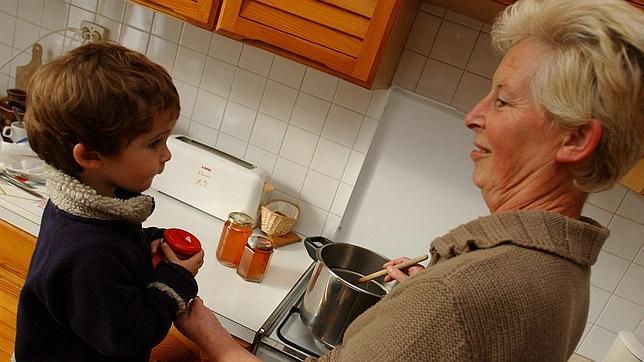Currently 17% of the population belongs to the group called “third age”. To the physical and psychological problems of the elderly to carry out their activities in daily life, in many cases the danger derived from poor maintenance of the homes in which they reside is added, which increases the risk of falls, burns and other type of injuries.
In most cases they live as a couple or with their children, almost 20% of them live alone. Falls, burns and electrical accidents are the main causes of injuries in this age group. The kitchen, the bedroom and the bathroom are the areas with the greatest risks.
Maintaining the facilities of the homes in proper condition, not only reduce the risk of our elderly suffering an accident, but will become a safe investment in the long term: we must not forget that we all grow old. Repair has located the main risk areas and household traps that are in danger to our elders and has developed a list of tips to avoid them.
1. In the bathroom. The bathtub is one of the main enemies of the elderly, so it is advisable to replace it with a shower tray since access is easier and more convenient. In addition, the most advisable thing is that it is installed completely at ground level, to avoid that our elders stumble and facilitate wheelchair access in cases where it is necessary.
Using non-slip mats prevents slipping, placing grab bars in the shower and in the preventive device of possible falls, try not to use stoves, electric radios or any other device less than 1 m or 1.5 m away while taking a shower. In fact, if we have a stove or heater in the bathroom, we must turn it on for a while before taking a shower and disconnect it during the bath. All plugs must be grounded to prevent discharge.
2. In the kitchen. Try to turn off the appliances once they are not used. It seems logical, but how many times have you left running to turn off the glass? Careless fires are one of the main causes of damage to the home: never leave paper, cloth or napkin near the kitchen.
The objects must be available so that our elders do not have to overexert themselves when it comes to reaching the most used materials, such as glasses, plates, pots and pans. Likewise, as in the bathroom, all plugs require an earth connection.
3. Bedroom. Try to place the most used materials and utensils, stories such as clothes, sheets, sewing kit or medication box as much as possible. Avoid using stairs or chairs to locate objects on the heights, since dizziness can play bad passes.
The choice of the bed is another important point since, in front of the traditional high-rise beds and limitations at ground level, those of our elders must adjust to a height that allows them not to make an extra effort for their joints , being able to get on and off it comfortably. Check the fixing fixings of headboards, mirrors and shelves.
4. In the lounge. Although it is often the house brand, it is not advisable to use electric braziers under the table tables. The shelves must be fixed to the wall, even those standing. And since the room is not only the meeting area, but also usually becomes a recreation area for the elderly, good lighting is essential. This will not only avoid many stumbling blocks, but will reduce the eye effort when watching television, reading, playing with grandchildren or doing their jobs.
5. Corridors Stairs must have switches both at the beginning of the traffic and at the end, so that they can be illuminated both on the way up and down. They must also have handrails. To avoid unnecessary wiring, it is preferable to have plugs distributed throughout the different areas and not use extensions. In case you have to use them, it is preferable to fix them to the wall, not to trip


